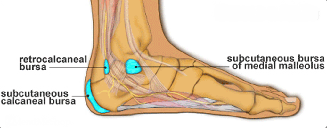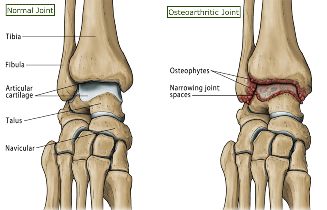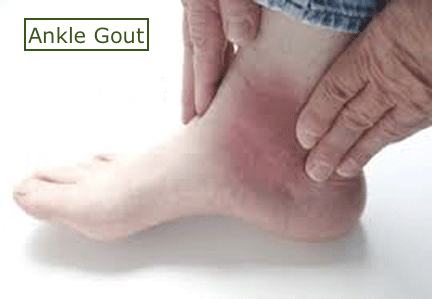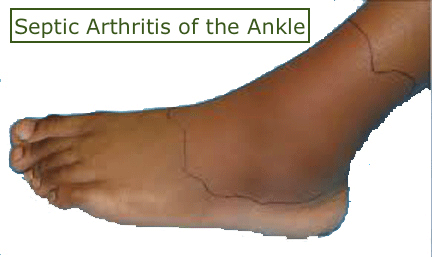Ankle Pain
What is it?
Ankle pain refers to any type of pain or discomfort that arises in or around the ankle. There are many different causes of ankle pain, ranging from injuries to a number of different medical conditions. Treatment options are dependent on the cause of ankle pain, which has to be determined before any specific treatment can be recommended.
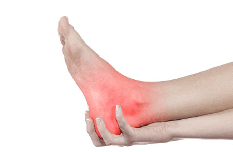
Common Causes of Ankle Pain
Ankle Sprain
Ankle sprain occurs when ligaments get overstretched or tear, usually through excessive stress on the ligaments. One or more ligaments can be injured during a sprain. Ankle sprain is one of the most common cause of ankle pain, being mainly caused by sudden twisting, turning, or rolling movements of the ankle. Pain will depend on the severity of the injury – whether there is a partial or complete tear, and whether one or more ligaments are involved. Treatment usually involves rest, ice, compression and immobilization of the ankle. Non-steroidal anti-inflammatory drugs (NSAIDs) are the most common pharmacological approach.
Ankle Tendon Problems
- Achilles tendinitis, is a painful inflammatory condition of the Achilles tendon, which connects the calf muscle to the back of the heel. It occurs mainly due to overuse and due to the continuous load the Achilles tendon is subjected to, be it in everyday life or in most sports, leading to swelling and small tears in the tendon. Achilles tendonitis is an inflammatory condition associated with swelling and pain. The first treatment approach is the reduction of pain and swelling with rest, ice, compression and elevation (RICE) of the affected area. NSAIDs are the first choice in pharmacological treatments. Gentle stretching to avoid stiffness is helpful as is avoiding further loads on the tendon until the tendon is healed. A corticosteroid injection into the tendon sheath with ultrasound guidance is helpful to reduce tendon inflammation when more conservative treatments do not help the pain.
- Achilles tendinopathy is a painful long-term degenerative condition of the Achilles tendon that occurs when the healing rate is less than the injury rate. There is a loss of the elasticity (collagen) within the tendon due to repetitive overloading. This condition does not respond well to anti-inflammatory treatments and are best treated with functional rehabilitation, especially eccentric physical therapy (strengthening while stretching the tendon). Treatments for tendinopathy that does not respond to physical therapy include dry needling of the tendon or platelet rich plasma injections.
- Achilles tendon rupture can occur if there is a sudden overload or trauma to the Achilles tendon, that tears the tendon. Achilles tendon ruptures occur most of in athletes or those who lift heavy objects for a living. A tendon rupture is a risk of a steroid injection into the body of the tendon. If the tendon is completely torn, surgery may be needed.
Bone Fractures
Bone fractures, colloquially referred to as broken ankle, are common injuries in or around the ankle joint and in the foot, being a common cause of ankle pain. Bone fractures can happen as a consequence of an impact or another traumatic injury. The severity of bone fractures is variable and will determine the type of treatment needed. Immobilization with cast is generally required, but fracture stabilization with orthopedic pinning or open joint surgery may be necessary.
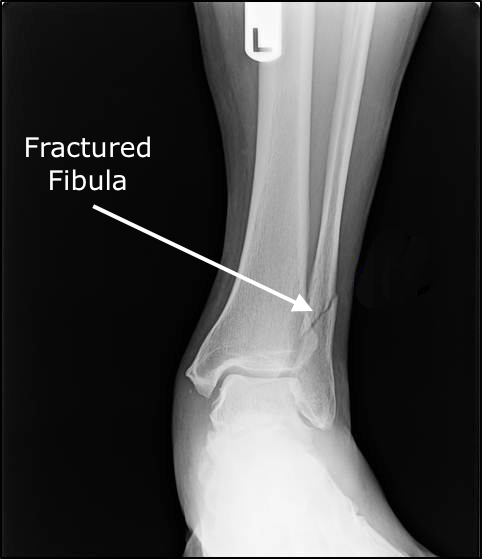
Bursitis
Bursitis is the inflammation of the bursa, a sac filled with lubricating fluid, which decreases rubbing, friction, and irritation, acting as a cushion between bones and other moving body parts such as muscles, tendons, or skin. In the ankle, the retrocalcaneal bursa, located at the junction of the Achilles tendon with the heel bone, is the most common site of bursitis. Inflammation of this bursa can be caused by overuse and is often linked to Achilles tendinitis. Ankle bursitis causes pain and tenderness around the ankle. It can be treated through rest, ice, compression of the area, and elevation of the ankle (RICE). Pharmacological approaches include NSAIDs, such as ibuprofen and naproxen, or local corticosteroid injection with ultrasound guidance to the affected area can be very helpful in reducing pain and inflammation due to bursitis.
Arthritis
Arthritis is a painful joint disorder. Its causes can be inflammatory, degenerative, infectious or metabolic in nature. Besides pain, the most common symptoms include swelling, warmth, tenderness, stiffness and decreased range of motion. The treatment of arthritic pain will depend on the type of arthritis.
- Rheumatoid arthritis (inflammatory arthritis) is a chronic autoimmune inflammatory disease of the joints that occurs when the immune system starts to attack its own tissues, in this case the lining of the joints (synovial membrane). Rheumatoid arthritis generally occurs in a symmetrical pattern, which means that if one joint is affected, the joint on the opposite side will also be affected. Besides the common symptoms of arthritis, specific symptoms of rheumatoid arthritis may include fatigue, occasional fevers, and loss of energy. Treatment for pain associated with rheumatoid arthritis is mostly based on the use of corticosteroids, NSAIDs, and disease-modifying anti-rheumatic drugs.
- Osteoarthritis (degenerative arthritis) is a chronic disease characterized by the breakdown of cartilage in the joints, leading to a loss of cushioning at the ends of the bones, and causing the bones to rub against each other. Inflammation may be present at early stages of osteoarthritis, but as it progresses, it is mainly characterized by the degenerative changes in joint tissues. Besides pain, this often leads to loss of movement in the joint. Treatments for pain associated with osteoarthritis often include NSAIDs, but their efficacy is limited. Anticonvulsant and antidepressant drugs have been shown to be effective in the treatment of pain associated with osteoarthritis.
- Gout (metabolic arthritis) is a form of arthritis that occurs when excess uric acid deposits in the form of crystals in the joints. It may develop following an illness or an injury, or be caused by stressful events, alcohol or drugs. It is usually first noticed due to swelling and intense pain in the big toe, getting better after a few days even without treatment. Similar symptoms may later be felt on and off in other joints, including the ankles. After years with the disease, deposits of uric acid may form beneath the skin around the ankles. Treatments for acute attacks of gout include NSAIDs, corticosteroids, and colchicine, which works best within the first 12 hours of an acute attack. When attacks are recurrent, NSAIDs or colchicine in small daily doses may be prescribed as a preventive measure, as well as drugs that lower the blood levels of uric acid.
- Septic arthritis (infectious arthritis) occurs due to an infection of the ankle joint with a bacteria, virus or fungus. It may also occur due to spreading of an infection from another part of the body, or as a reaction to an infection in another part of the body (reactive arthritis). Besides the common symptoms of arthritis, specific symptoms of septic arthritis often include fever, sweats, chills, and an inability to move the infected joint. Treatment for septic arthritis may require the use of antibiotics; surgical drainage may also be needed.



